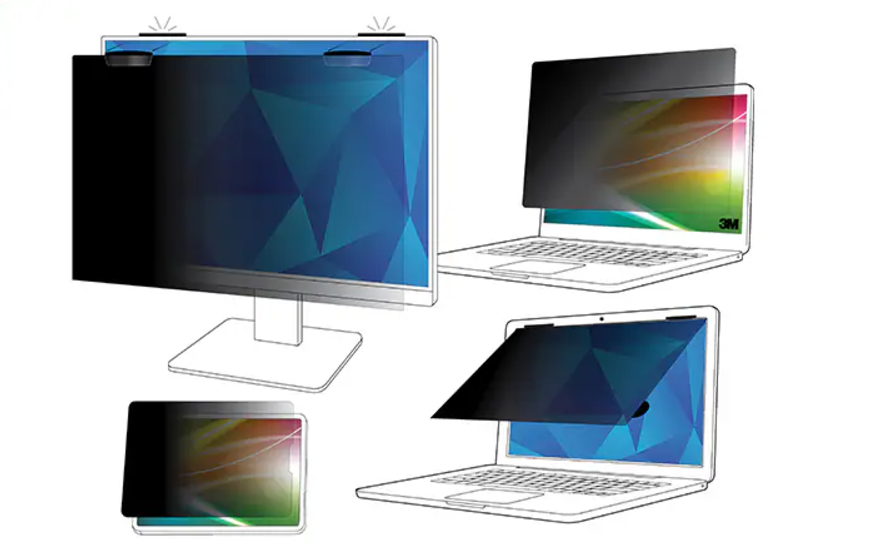Key insights
- Privacy screens help limit what others can see from the sides of your screen.
- Visual hacking is an easy way for someone to steal sensitive information – don’t make it easier for them.
- Be careful when working remotely: secure your device, use a secure travel case, and stay vigilant to protect your data.
Privacy screens are an inexpensive way to protect yourself from nosy colleagues and strangers while traveling, but they’re not flawless.
What is a privacy screen?
A privacy screen, sometimes called a privacy filter, is a thin piece of material placed over your laptop screen (or monitor) to prevent wandering eyes from reading your screen. If you look at the device from the right or left, you will only see a darkened screen.
While some units may have privacy screens built in by the manufacturer, you can also purchase privacy screens that you can install yourself at an affordable price.
You may have seen a similar device at a bank if you’ve ever tried to take a look at your account balance as the teller walked away. This is the same technology used in privacy screens, which limits the viewing angle of the screen. However, when viewed directly, the user can see the screen as clearly as intended, so this should not affect visibility.
Why privacy protection is important
I started using a privacy screen when I worked for a cybersecurity company where I had to use one when doing sensitive work in public or traveling. Even after I left the company, I continued to use one on my laptop because it puts less strain on my eyes and doesn’t affect the screen brightness too much. It also gave me a sense of security that anyone looking at my screen couldn’t see anything.
But that’s not all. A privacy screen can help protect against visual hacking. Visual hacking is a low-tech method of stealing sensitive information by physically looking at a person’s computer screen and either taking a photo or memorizing what is displayed on the screen. As a safety-conscious person, this is important to me.
Even if you don’t use your laptop for sensitive work, using it in public can reveal your private data or personal information. This may include emails, password logins and address submission forms. When you work remotely for a company, business data is at risk. This includes trade or marketing secrets, proprietary information, payslips/bank statements, customer information and contact lists.
Does your device already have a privacy screen?
Privacy filters can be used for both smartphone screens and computer screens. Some laptops (including those from HP, ThinkPad and Dell) even have a built-in privacy screen.
To quickly check if your monitor has a built-in privacy screen, type your device’s make and model into Google, followed by the term “privacy screen,” or check the manufacturer’s website. You can also look for a toggle or keyboard shortcut to enable or disable the privacy screen as some devices have this option – it can be Fn+F, or you can also search for it online.
Limitations of privacy screens
Although privacy screens have their advantages, there are some limitations. It can get a little annoying when you’re trying to show something to friends and family. They can’t see what you’re showing them unless you look directly (and not from an angle).
Privacy screens generally don’t significantly impact screen brightness or visual clarity, but you still need to keep the brightness at maximum to ensure it doesn’t become a limitation.
While I prefer to use a privacy screen for my laptop, it is primarily for this reason that I avoid using a privacy screen on my smartphone. I also haven’t found a good privacy screen for my phone as the ones I’ve tried dimmed my screen and affected the brightness quite a bit.
Although privacy screens provide visual protection from prying eyes, you should not let them give you a false sense of security. Never leave your device unattended as this may increase the likelihood of theft and loss. When traveling and staying in hotels, think about a secure laptop bag or travel bag with a combination lock.
You may also consider adding additional authentication to your device, including two-factor authentication and setting up a BIOS password.

